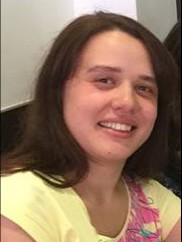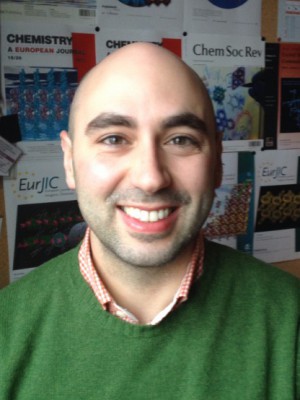abstract
A three-dimensional metal-organic framework (MOF), poly[[mu(6)-5'-pentahy-drogen [1,1'-biphenyl]-3,3',5,5'-tetrayltetrakis(phosphonato)]erbium(III)] 2.5-hydrate], formulated as [Er(C12H11O12P4)]center dot 2.5H(2)O or [Er(H(5)btp)]center dot 2.5H(2)O (I) and isotypical with a Y3+-based MOF reported previously by our research group [Firmino et al. (2017b). Inorg. Chem. 56, 1193-1208], was constructed based solely on Er3+ and on the polyphosphonic organic linker [1,1'-biphenyl]-3,3',5,5'-tetrakis(phosphonic acid) (H(8)btp). The present work describes our efforts to introduce lanthanide cations into the flexible network, demonstrating that, on the one hand, the compound can be obtained using three distinct experimental methods, i.e. hydro(solvo) thermal (Hy), microwave-assisted (MW) and one-pot (Op), and, on the other hand, that crystallite size can be approximately fine-tuned according to the method employed. MOF I contains hexacoordinated Er3+ cations which are distributed in a zigzag inorganic chain running parallel to the [100] direction of the unit cell. The chains are, in turn, bridged by the anionic organic linker to form a three-dimensional 6,6-connected binodal network. This connectivity leads to the existence of one-dimensional channels (also running parallel to the [100] direction) filled with disordered and partially occupied water molecules of crystalization which are engaged in O-H center dot center dot center dot O hydrogen-bonding interactions with the [Er(H(5)btp)] framework. Additional weak pi-pi interactions [intercentroid distance = 3.957 (7) angstrom] exist between aromatic rings, which help to maintain the structural integrity of the network.
keywords
PHOSPHONATE; DESIGN
subject category
Chemistry; Crystallography
authors
Mendes, RF; Firmino, ADG; Tome, JPC; Paz, FAA
our authors
acknowledgements
Funding sources and entities: Fundacao para a Ciencia e a Tecnologia (FCT, Portugal), the European Union, QREN, FEDER through Programa Operacional Factores de Competitividade (COMPETE), CICECO-Aveiro Institute of Materials (Ref. FCT UID/CTM/50011/2013), QOPNA (Ref. FCT UID/QUI/00062/2013), and CQE (Ref. FCT UID/QUI/0100/2013) research units, financed by national funds through the FCT/MEC and when applicable co-financed by FEDER under the PT2020 Partnership Agreement. Projects and individual grants: We wish to thank FCT for funding the R&D project FCOMP-01-0124-FEDER-041282 (Ref. FCT EXPL/CTM-NAN/0013/2013), and also CICECO for specific funding towards the purchase of the single-crystal diffractometer. FCT is gratefully acknowledged for the the PhD research grant No. SFRH/BD/84495/2012 (to ADGF). RFM acknowledge the project Smart Green Homes-BOSCH (POCI-010247-FEDER-007678) and for the Masters scholarships Ref. BIMSGH/CICECO-UA/174-01/2017.




